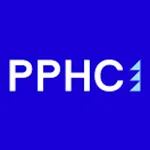|
|
This month I’m writing about two areas I feel are vastly important in the PR profession: safe harbor retirement plans and an introduction to the 2017 best practices in the PR industry.
Is a safe harbor plan the best move now?
Do you worry each year about whether your highly compensated talent will have excess salary deferrals returned to them due to your retirement plan failing discrimination tests? Most smaller plan sponsors take advantage of “safe harbor” rules that nearly always eliminate the need to worry about passing discrimination tests.
What are the test formulas?
Currently, the threshold for highly compensated employee (HCE) status is an annual salary of $120,000, or at least 5 percent company ownership. Using a test called the ADP or ACE test, a determination is made if your HCEs can maximize their annual deferrals. (Note: I am not discussing the mechanics of the formula but can provide this information if interested.)
What happens if you do not pass the above tests?
If you consistently fail the test formulas by a wide margin, a safe harbor plan design could look attractive. The rules provide two safe harbor formula categories to choose from to avoid ADP/ACP testing.
Your first choice is one of two minimum contribution formulas:
• Match 100 percent of the first 3 percent of deferred compensation and 50 percent on deferrals between 3 percent and 5 percent (this means the maximum you would contribute is 4 percent of employee compensation), or ...
• Match 100 percent on the first 4 percent deferred.
The second choice is the non-elective contribution rate. The PR agency must contribute 3 percent of the eligible employee’s compensation, regardless of how much or little your non-highly compensated employees save on their own.
Note, all safe harbor contribution amounts must vest immediately with the employee.
The QACA
A qualified automatic contribution plan is also a form of safe harbor plan. With this approach, you must auto-enroll employees into the plan and a qualified default investment option such as a target date fund. A QACA must have a minimum initial deferral rate of 3 percent and annual deferred rate increases of at least 1 percent until the deferred rate reaches at least 6 percent, but no more than 10 percent.
In addition, the plan must have 100 percent of deferrals on the first 1 percent deferred, and at least 50 percent on incremental deferrals up to 6 percent. The net result of all the above is a maximum required match of 3.5 percent. A two-year vesting formula is permissible.
Your next step
Safe harbor plans take some planning. If you want to establish a new safe harbor plan, you must do so by October 1 for calendar year plans. Existing 401(k) plans have until January 1 to start as a safe harbor plan.
You must provide participants a notice of intent to be a safe harbor plan for the coming year at least 30 days prior to the new plan year. If you currently have a 401(k) plan, check your plan documents to ensure you can amend them to add a safe harbor plan.
Is this for you?
Going the safe harbor route is the path of least resistance, but can also be the more expensive one. Set a time to discuss the pros, cons and applicable documentation with your benefits advisor. He or she can review the discrimination test with you, as well as determine whether a safe harbor plan would work for your organization.
An introduction to the PR Industry Best Practices Report
I was recently speaking with a person knowledgeable with the PR Industry. His observation is traditional PR has come and gone. Do you agree? I would like to get some feedback on this: [email protected].
An agency without digital PR may not be able to compete in today’s market place. I asked Rick Gould what he thought about this statement. He agreed that in the long run social media/digital PR is a must. When I asked him if the it is possible for a more traditional firm to do a “bolt on” acquisition of a digital shop, he said yes assuming you can find a digital agency that wants to be acquired. More on this next time out.
Rick Gould just published the Gould+Partners PR Agency Best Practices Benchmarking Report. Next month I will review the results of the report that I believe is critical to your agency.
By way of introduction, per the report, there are 22 critical benchmarks. The most critical being revenue per professional; account salaries; labor cost; rent; operating overhead and profit; billing for travel; minimum fees; and baseline hours, to name a few.
Catch up with you next month.
***
Richard Goldstein is a partner at Buchbinder Tunick & Company LLP, New York, Certified Public Accountants.

 Richard Goldstein
Richard Goldstein
 Omnicom CEO John Wren reports Q1 revenues jumped 5.4 percent to $3.6M, powered by a solid 7.0 percent rise in its advertising & media segment.
Omnicom CEO John Wren reports Q1 revenues jumped 5.4 percent to $3.6M, powered by a solid 7.0 percent rise in its advertising & media segment. Public Policy Holding Company registered 24.1 percent growth to a record $135M during the past year, which included the results of the March 1 acquisition of Multistate Assocs.
Public Policy Holding Company registered 24.1 percent growth to a record $135M during the past year, which included the results of the March 1 acquisition of Multistate Assocs. Stagwell CEO Mark Penn reported Q4 net revenues dipped 5.6 percent to $551.1M during a “challenging year for marketing services and digital transformation.”
Stagwell CEO Mark Penn reported Q4 net revenues dipped 5.6 percent to $551.1M during a “challenging year for marketing services and digital transformation.” Why M&A activity in the PR and marketing sector could pick up in 2024.
Why M&A activity in the PR and marketing sector could pick up in 2024. WPP reported Q4 revenues inched ahead 0.3 percent to $4.1B as CEO Mark Read wrapped up a year that he said was more challenging than expected due to cutbacks, mainly by technology clients.
WPP reported Q4 revenues inched ahead 0.3 percent to $4.1B as CEO Mark Read wrapped up a year that he said was more challenging than expected due to cutbacks, mainly by technology clients.


 Have a comment? Send it to
Have a comment? Send it to 
No comments have been submitted for this story yet.